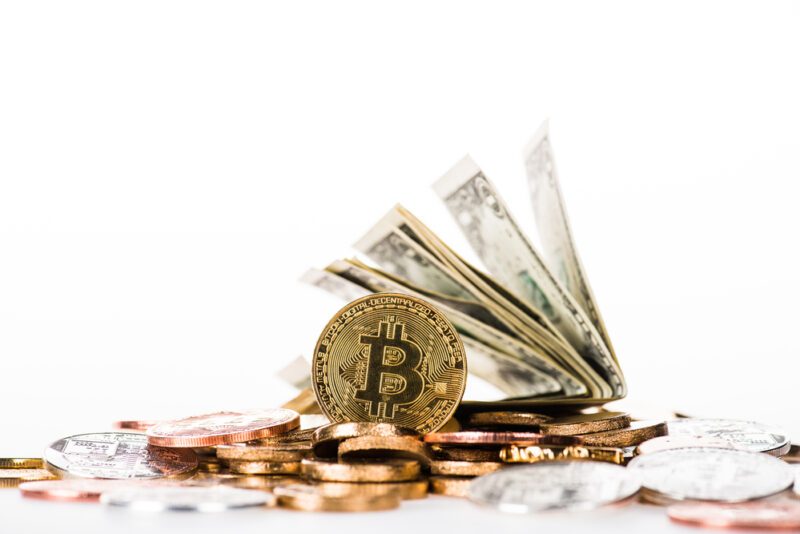Bitcoin may be getting ready to move upwards. However, in the event this happens, it is doubtful that the rise will be meteoric and any rise in value will not reach the cryptocurrency’s all-time high of $63,000 plus. Bitcoin, the number one crypto by market cap, has rebounded somewhat and is trading in a narrow range, after falling by almost 50 percent from its record high.
However, mining activity seems to suggest that reaching a price of $40,000 is a distinct possibility.
Over the last week or so, several indicators have reflected a bullish attitude prevails. According to a recent research report authored by Lennard Neo, a financial analyst at Stack Funds in Singapore, the skew is somewhat neutral over the short and medium term.
It would appear that the invisible hand of Adam Smith is at work in the market. This metaphor describes buy and sell incentives. When the price of Bitcoin is high, miners have the incentive to sell, thus making a quick profit on the transaction. As the supply of the crypto increases, this often leads to a downturn in the price.
However, things have changed somewhat. Prices are considerably below their recent all-time highs. As such, miners are sitting on their new coins rather than sell at a loss. Just as the price drops when the supply increases, the price increases as the demand grows.
To solve complex puzzles, which in turn earn new coins, Bitcoin miners employ powerful computers. To refresh the blockchain, the mining process is required. The blockchain is the record of Bitcoin transactions and cannot be altered.
The Puell Multiple
Bitcoin analyst David Puell developed a metric as evidence that suggests a price gain. The metric uses a simple ratio that divides the daily value of the crypto issuance by the one-year moving average.
A high ratio suggests miners are profiting, which often leads to sell-offs. Conversely, when the ratio is low, the urge to sell is less. This fact leads to a reduction in supply which, in turn, leads to a price increase. As it sits currently, the “Puell Multiple” is about 1.40. At this level, there is little incentive for Bitcoin miners to sell. The ratio was more than 2.50 earlier in the year and has been as high as 3.53.
It is conceivable that the high ratios seen earlier in the year may have influenced the market trading within a narrow band just before the selloff.
Neo noted, “Should the multiple drop below 1.0, there is the potential of significant buying opportunities.” He went on to suggest that further downside could appear, which would generate better value for those looking for entry points. In “Cryptospeak” an entry point is a good point for bold investors to buy.
Late last week the so-called “Fear and Greed” index indicated extreme fear. It was little more than a month ago when the index indicated extreme greed. Extreme greed is an indicator that crypto investors are concerned about price movement in the immediate future.
Long-term investors may see this as a chance to buy as these investors are willing to live with wildly vacillating short-term swings in the price.
This “Fear and Greed” index does appear somewhat accurate as it did size up the market before and during the recent downturn in pricing. The market is of mixed opinion, Bitcoin either faces significant challenges or the challenges will strengthen the market.
Those who are skeptical of crypto suggest the recent downturn only reinforces Bitcoin’s volatility, denying the validity of the argument that it is a good store of value. Should there be any truth to this point of view, it weakens the argument that it is a good hedge against inflation.
There May Be a Threat Ahead
Bitcoin’s long-term relevance is being questioned as governments begin to impose strict regulations and crackdowns on tax avoidance.
As well as the regulatory issue facing Bitcoin, there is the Chinese digital Yuan. The current experiment could very well challenge the dominance of the U.S. dollar in global markets. To counter this move, the Fed is working with MIT researchers on the development of a digital dollar.
If what MIT is working on should prove to be a success, digital currencies would be government-issued. The new generation of digital currency would be regulated, easy to use, and secure.
If this should happen, does this mean the end of crypto?
WeInvests is a financial portal-based research agency. We do our utmost best to offer reliable and unbiased information about crypto, finance, trading and stocks. However, we do not offer financial advice and users should always carry out their own research.
Read More













